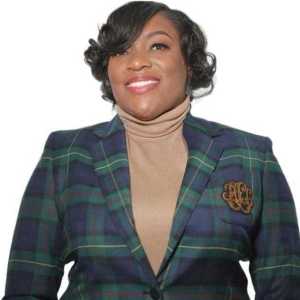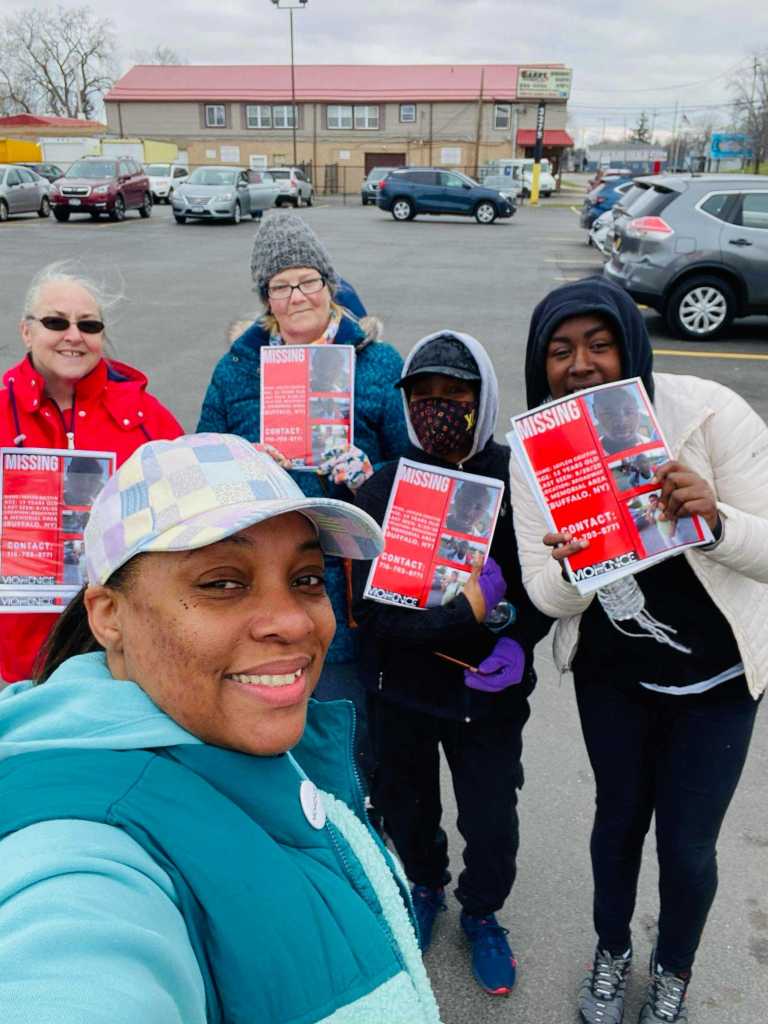The Mysterious Death of Jaylen Griffin and the Search for Answers
After nearly four years of searching for Jaylen Griffin in upstate New York, his family was given 90 minutes to process and prepare for a press conference that would reveal their everlasting grief to the world.
Ten days before what would have been Jaylen’s 16th birthday, his body was found in an attic 5 miles away from his Buffalo home. His dental records were used to identify him.
Police said he had been deceased for a “considerable amount of time,” and the medical examiner could take several months to complete his autopsy. A spokeswoman with the Erie County District Attorney’s Office said their office is assisting in the homicide investigation. Buffalo Police Commissioner Joseph A. Gramaglia described the heartbreaking news at the April 15 press conference as the “next level of closure” for Jaylen’s family.
The 12-year-old’s family has experienced an overwhelming amount of heartache since they last saw him Aug. 4, 2020. Three months after Jaylen went missing, his 18-year-old brother was murdered near their family’s Warren Street home. That same year, Jaylen’s oldest brother survived being shot on his 21st birthday. And Jaylen’s mother, Joann Ponzo, passed away in September from what was described as a “broken heart.”
Kareema Morris, founder of the organization Bury the Violence, attended that press conference on behalf of the Griffin family — a role she often takes on to spare vulnerable relatives from more heartache and feeling forced to answer intrusive questions.

A year after Jaylen’s family reported him missing to the Buffalo Police Department, they reached out to Morris for help. They said the police labeled Jaylen as a runaway — a term often given to missing children of color that reduces the urgency of their case, minimizes law enforcement resources, and diminishes any chance for media attention.
That term was all too familiar to Morris. Hearing that another missing Black child was labeled as a “runaway” was a cornerstone to what inspired Morris to launch Bury the Violence following the September 2013 murder of her niece, Lanasha Rollerson. The 13-year-old girl went missing, and the Buffalo police labeled her as a runaway, too. Her body was found three days later.
Capital B has reached out to the Buffalo Police Department for comment about their missing person policy and usage of the term “runaway.” We have not received a response as of publication.
Read More: The Lawmakers Fighting the Epidemic of Missing and Murdered Black People
What’s been the impact of Jaylen’s case?
It has been challenging to reconcile that Jaylen was found less than 5 miles away from home and in a house with a history of reported dead bodies. In that part of South Buffalo, Morris said, is a community where they speak to one another and “are neighbors first.” She strongly believes that someone knows something because Jaylen “didn’t just pop up there.”
“How was he in this space and no one has seen, heard or smelled anything?” Morris asked. “Was he led there, was he lured there, was he brought there feeling like this was somebody that he may have known to travel with comfortably.”

With all the efforts Morris and her team — mostly family, including Lanasha’s mom, Morris’ six children, ages 15 to 28, in addition to volunteers — put into Jaylen’s search, she cannot help but to wonder: “What happened? Where did we miss? What clues were there?”
Morris and other Buffalo residents have been left with more questions than answers.
What’s the advocate’s role in a missing person’s case?
When Jaylen’s family reached out to Morris in 2021, she had already built a reputation in the community for reuniting nearly 200 families around the world with their loved ones who went missing in the Buffalo area. People often find out about her through word of mouth, and they can fill out a form on her website.
Similar to organizations such as Black and Missing Foundation and Our Black Girls, Morris’ mission is to not only find the missing but bring media coverage to those who are often forgotten — people of color.
Her main focus is people who have been reported missing in the Buffalo area.
“I have had people reach out to me to find family members that may have traveled here and went off the grid,” she said.
Then there are cases when Morris doesn’t know if the person she is looking for is escaping an abuser or a trafficker or having a mental health crisis, or if the person who is asking for help is really an aggressor.
“I still located them,” she said.
How are cases of missing teens different from adults?
“As long as they’re not expressing that this is an abuser that’s looking for them,” Morris says she gives the missing adult the option to call home themselves, or she could relay a message that they’re alive.
If the missing person doesn’t want to go back home, Morris provides them with resources such as cellphone service, and she tries to get to the root of why they left home in the first place.
“And most of the time it is just kids being kids. They don’t want to hear what somebody’s got to say if they fell out with somebody. And it’s like, well, they still love you, and I’ll let them know you’re OK — and that means I got your address and you know I found you,” she said.
“Sometimes kids just don’t get up and walk away. Sometimes it was things that led up to it,” Morris said. There have been cases of neighbors holding kids hostage and family members sex trafficking their own children.
“We have to remember that it only takes one incident for somebody to do something, and you are really off the grid,” she said.
Are there common places where missing teens are found?
“Well, often, you’ll find out that in a certain age range, there are children that are, I want to say very specifically, they’re groomed,” Morris said. “They have friends that help them navigate the streets outside of what they’re experiencing at home. The freedom, that kind of stuff, is kitschy to kids when they can’t get their way at home according to what they feel like life should be.
“Then you have groups of kids that end up wandering off, being in houses or hanging out at kickbacks. Their parents are frantic, and they’ve been hanging out with these kids and their parents don’t know who they are. They don’t have parents’ information for those kids, and they’re in houses doing only God knows what’s going on.
“We call those ‘hotspots’ for the kids that were located in some common spaces. They use those kids that are in their age range to manipulate them to come out, and some of them are trafficked,” Morris said.
Working in the Buffalo school system has been to Morris’ advantage. Some of the students she has found have done research on her afterward and become her “youth advocates” to help her find other kids, preteens, and teenagers who have gone missing.
“You cannot get stuff done if you don’t have a relationship with these kids. They know when you’re blowing smoke or when you’re serious. The youth are key in the work,” she said.
What’s skip tracing, and how can the public help?
Morris, 45, uses skip tracing tools she learned as a debt collector to help find missing people.
“We can flip information on people, see who their next of kins are, who they’ve ever been affiliated with, you can even go through systems” such as social services to connect to other people who live at one’s address, she explained. “Those are people that’s going to pop up on skip tracing.”
Morris started her own investigation into Jaylen’s disappearance by using skip tracing to track him and his connections’ online activity. She said she retraced the police investigation and launched a visibility campaign online by reposting a flyer of Jaylen that her organization created on apps such as Ring and a premium version of Citizen. They handed out physical missing person flyers at shopping mall parking lots and other locations, collected available surveillance footage, and requested cadaver dogs as well as aerial views for search party efforts.
Morris’ organization is actively fundraising to provide those direct services, including instructional videos-on-demand. She was shy about disclosing the details of this project but said, in part, that it would aim to train all ages, specifically those in customer-service based occupations such as school administrators, hotel employees, social workers, pediatricians, on what to do if they encounter a kidnapped or missing person. Once more people are trained, it would give Morris the space in her schedule to balance networking with other advocates and fundraise for the organization.
The post The Mysterious Death of Jaylen Griffin and the Search for Answers appeared first on Capital B News.

